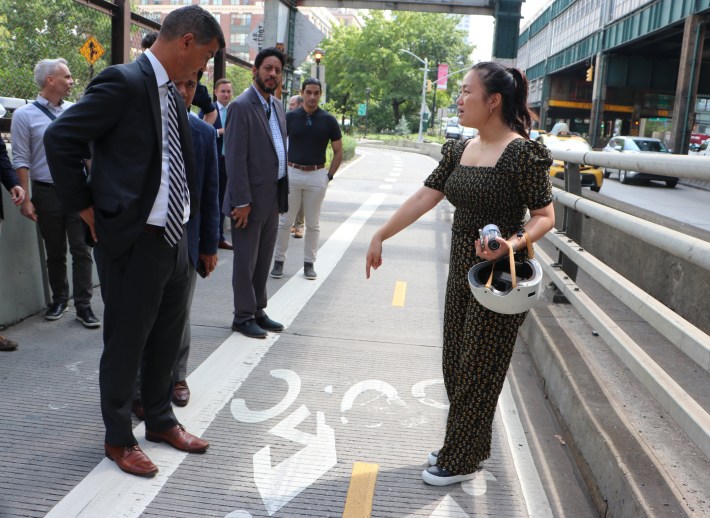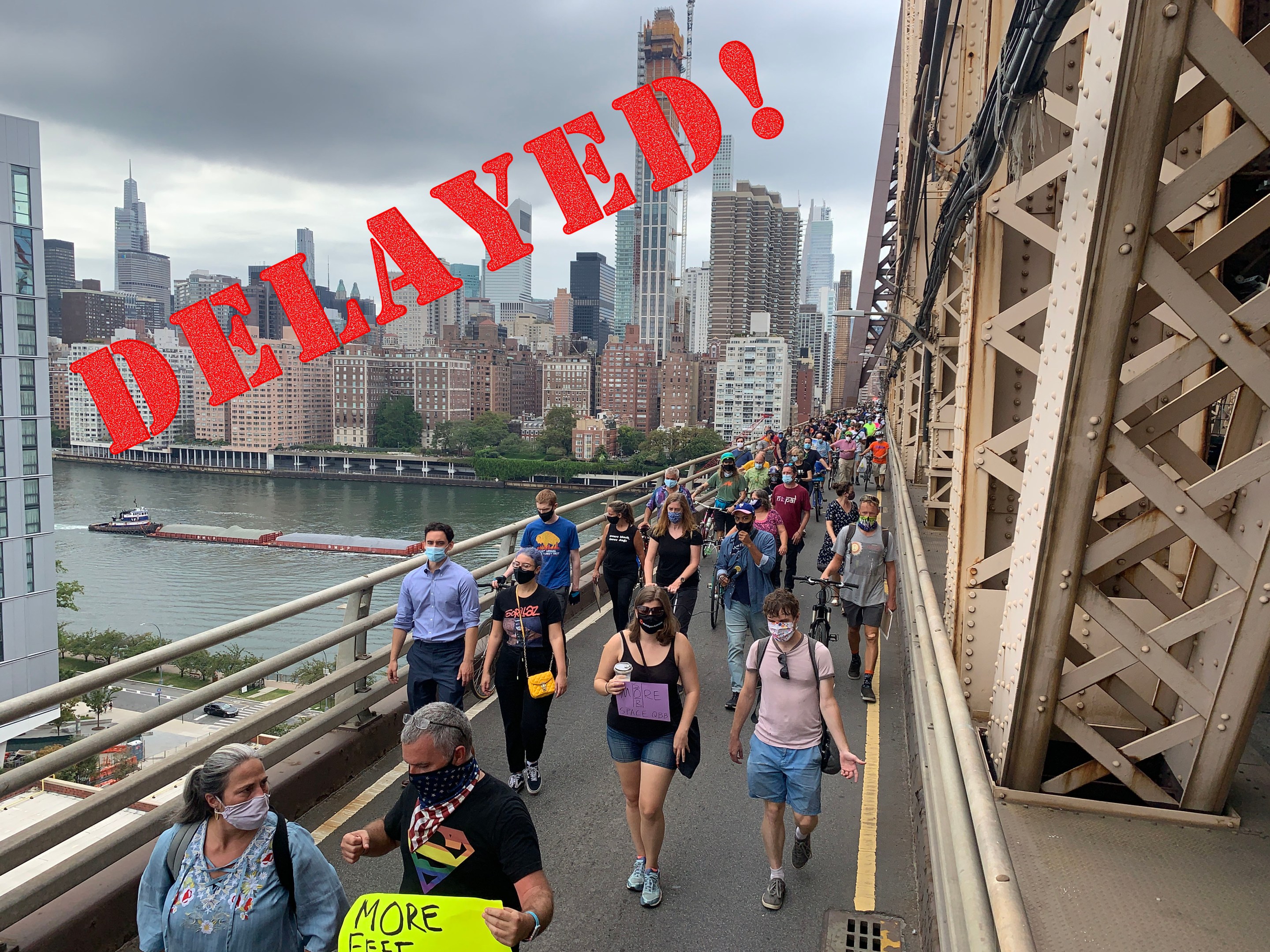Another day, another delay.
A city plan to give both pedestrians and cyclists their own space on the crowded Queensboro Bridge won’t be done until at least the middle of next year, the Department of Transportation quietly revealed during a Council hearing last week — just weeks after the agency revealed that it had already pushed back a plan that was originally promised to be completed by the end of 2022.
“Now we're looking at mid-'24,” said First Deputy Commissioner Margaret Forgione, announcing a change from the agency's promise to be done in “early ’24” that it announced in March. “We want this project to happen as much as you do. We are watching this every single day to see if there's anything we can do to expedite the work.”
It’s now the fourth time the DOT has delayed its own timeline for transforming the south outer roadway from a car lane into a dedicated pedestrian path in order to give cyclists sole access to the north outer roadway, which is dangerously overcrowded amid an ongoing bike boom, contributing to near-deadly collisions.
“It was announced that it would be open in 2022 ... and last year you said that it may be 2024,” Council Member Julie Won (D-Astoria) fumed during Friday's hearing. “You now have a delayed update again so I expect you as DOT to make that announcement.”
Forgione blamed the additional delays on vague “supply chain” issues involving the procurement of paint for work on the replacing the bridge’s upper deck — a project DOT has previously said it wants to complete before opening the south outer roadway to pedestrians.
“We’ve experienced issues with that contract, one of the main issues is that we’ve had supply chain issues with some of the materials, for example, one important component to have the paint to be able to be made is very difficult to be able to procure right now in a worldwide way,” she said. “We’re still working out the supply chain issues and closing out that contract.”

DOT did not respond to requests for comment asking for more details on the exact supply chain issues or how it's affecting the work.
Ex-Mayor Bill de Blasio in 2021 promised to turn the more than century-old span’s south outer roadway into a full-time pedestrian path by the end of 2022. But that deadline came and went, and now his successor, Mayor Adams, continues to push back the schedule.
Won questioned why the DOT can’t just cede the south outer roadway to pedestrians during ongoing reconstruction of the upper car lanes, but Forgione claimed that removing another lane for service to car drivers would cause too much congestion. (Depending on the construction schedule, drivers always have access to a minimum of eight lanes, but often nine, while cyclists and pedestrians share a single lane on the 10-lane bridge.)
“The reason why we're not in a position to just open up the south outer roadway and continue to work on the upper deck is that the ramifications for traffic would be immense and we can all say that maybe we can live with that, but we would see extensive extensive lengths of gridlocked streets we’d have pedestrians crossing through cars that are stopped on the crosswalks,” she said. “We’d have gridlocked conditions, so we’re not comfortable doing that.”
In a letter to Won last year, DOT officials predicted an additional 8,000 motorists would have to wait to cross over the bridge into Queens each weekday — less than five percent of the about 170,000 vehicles that use the span each Monday through Friday, Streetsblog previously reported.
But exactly how extensive the delays would be, if at all, is unclear, according to Bike New York's Jon Orcutt, who was DOT's policy director from 2007 to 2014. At the very least, the city could test closing the south outer roadway to cars.
"I think we should be saying, 'Prove it' to DOT when they claim this," said Orcutt. "Where's their analysis? Why don't we try some stuff on weekends and publicize it so people don't drive that way?"
And Won was not pleased with the agency's excuse, charging that it’s a matter of life and death for cyclists and pedestrians still forced to share the narrow pathway, compared to a minor inconvenience for drivers.
“Right now the amount of crashes that are happening on the north outer roadway because it’s so congested with the increase of pedestrians, as well as the increase of cyclists, is going to risk lives,” said Won.






